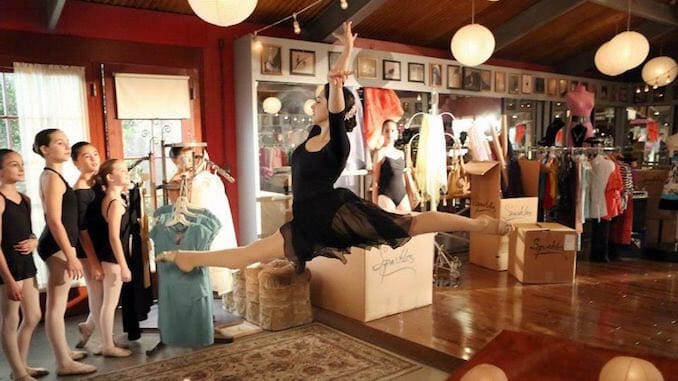TV Rewind: Bunheads Remains On Pointe
Photo Courtesy of Freeform
Editor’s Note: Welcome to our TV Rewind column! The Paste writers are diving into the streaming catalogue to discuss some of our favorite classic series as well as great shows we’re watching for the first time. Come relive your TV past with us, or discover what should be your next binge watch below:
![]()
Look I know that Bunheads, the short-lived young adult dramedy from creators Amy Sherman-Palladino and Lamar Damon, could easily be thought of as simply the former’s “Gilmore Girls, but make it dancing.” But there’s reason to argue that Bunheads might be the better show.
Both series focus on fast-talking brunettes with mommy issues (Lauren Graham’s Lorelai Gilmore; Sutton Foster’s Michelle Simms). Both shows include slim and perfect-for-this-specific-world teens (Alexis Bledel’s bookish Rory Gilmore; Julia Goldani Telles’ poor rich girl Sasha). Both are set in idyllic small towns brimming with eccentric characters (and both shows frequently use the same actors to play them). And, most importantly, both shows make use of the formidable brilliance of Kelly Bishop to create under-appreciated scapegoats that the leads can blame for everything, even when they’re in the wrong.
But Bunheads’ more perfect legacy might be because it only lasted one season on what was then called ABC Family (now Freeform) and therefore didn’t have to deal with its teen characters growing up and doing things completely out of character just to give them something to do. Or perhaps because it starts with such a shocker of an ending to its pilot, thus setting the tone for a darker, more serious show.
The series opens with Foster’s Simms, a once-promising ballerina who partied too much, flamed out, and suddenly found herself a decade or so older and barely making ends meet as a Las Vegas showgirl. Her biggest fan is the sweet-but-dopey Hubbell Flowers (Alan Ruck, maybe cast in part because he’s one of the few actors tall enough to be able to look Foster in the eye). A successful owner of a shoe business, Hubbell’s work frequently brings him to Sin City where he always comes to Michelle’s shows and bestows her with gifts, despite her repeated brush-offs and not really knowing much else about her. But one night he catches her feeling vulnerable. He seizes the moment and takes her to what she turns into a liquid dinner as he spins tales of his utopian home—in a town that is literally called Paradise. She wakes up the next day hungover with her head hanging out of his car door and a ring on her finger. Hubbell is happy as a clam in the drivers’ seat next to her.
When they arrive in Paradise, he is not wrong that he has a Hollywood soundstage-perfect view of the ocean from his bedroom window. He just neglected to mention that, in order to get to it, one must traipse past a cottage of knick-knacks, tchotchkes, and some third synonym owned by his housemate/mother, Fanny (Bishop). Oh, and Mom was also a professional dancer and now has a ballet school on the property. It’s all a little much for Michelle to take in, but sex with Hubbell and a dance-off with Fanny help make the Stockholm Syndrome kick in, and she figures it’s not so bad in Paradise.
Then Hubbell dies in a car accident.
OK, so to recap: We’ve got a once-promising dancer and emotional trainwreck who got drunkenly hitched to some stranger with Norman Bates tendencies and immediately left her home with only the clothes on her back to wind up in a town so small there’s no movie theater. Then he’s dead and she’s trapped there and everyone blames her. How is that not good TV?
And we haven’t even discussed the teen dancers yet. Why have one pop-culture spewing precocious child prodigy when you can have four? In addition to Goldani Telles’ Sasha, Bunheads also has Bailey Buntain’s self-conscious Ginny, Kaitlyn Jenkins’ determined Boo, and Emma Dumont’s simply happy-to-be-here Mel. They’re quickly fascinated by Michelle and her real-world dancer experience, even if it takes a beat for Michelle to feel the same.
Dance routines frequent the episodes, not surprisingly. But some happen as stand-aloneroutines at the end to punctuate the main story—an unusual choice for a cable channel show geared toward a younger audience. A host of dancers and musical theater talent also appear throughout the season, including Foster’s actual brother Hunter who shows up to play her character’s hot mess of a brother, Scotty.